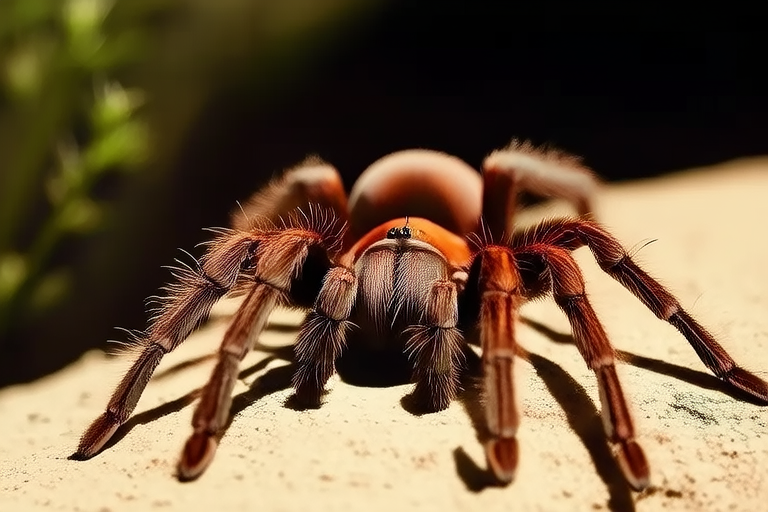8 Myths About Tarantulas Debunked Once and For All
Tarantulas, the largest spiders in the world, belong to the family Theraphosidae. These arachnids come in a wide array of sizes, colors, and habitats. With over 900 species identified, tarantulas inhabit various regions across the globe, from deserts to rainforests. Despite their intimidating appearance, tarantulas play a crucial role in maintaining ecological balance by controlling insect populations. Their diverse adaptations have made them popular subjects among researchers and enthusiasts alike. However, misconceptions abound regarding these creatures. This article aims to dispel eight prevalent myths about tarantulas, providing clarity on their behavior, safety, and care.
Myth 1: Tarantulas Are Highly Aggressive
One of the most common misconceptions about tarantulas is that they are aggressive. In reality, tarantulas are generally shy and reclusive creatures. They prefer to avoid confrontation and will only bite if they feel threatened or cornered. Studies have shown that tarantulas are more likely to retreat than attack when faced with potential predators or human interference. Their primary defense mechanism involves hiding in burrows or camouflaging themselves against their surroundings. When provoked, some species may flick urticating hairs from their abdomen as a defensive measure, which can cause irritation but is not harmful.
Myth 2: Tarantulas Can Jump Great Distances
Another myth surrounding tarantulas is their ability to leap impressive distances. While it’s true that some smaller tarantula species can jump short distances, this is not a widespread characteristic among all tarantulas. The majority of tarantula species are ground-dwelling and move by walking rather than jumping. Their legs are adapted for walking, digging, and climbing, but not for long-distance leaping. Research indicates that tarantulas primarily rely on their powerful legs for locomotion, enabling them to move swiftly when necessary but not to perform acrobatic feats.
Myth 3: Tarantulas Are Poisonous and Deadly to Humans
The fear associated with tarantulas often stems from the belief that they are highly venomous and deadly to humans. Contrary to popular belief, tarantulas’ venom is generally not potent enough to pose significant danger to humans. While their bites can cause localized pain, swelling, and mild allergic reactions, they are not lethal to healthy adults. Scientific studies have shown that tarantulas’ venom is primarily used to subdue prey, such as insects and small vertebrates, rather than defending against larger threats like humans. In rare cases, individuals with severe allergies may experience more serious reactions, but fatalities are extremely uncommon.
Myth 4: Tarantulas Hunt Mammals and Birds
Tarantulas have a reputation for hunting mammals and birds, which is another misconception. In reality, the diet of tarantulas consists mainly of insects, small invertebrates, and occasionally small vertebrates like lizards and frogs. Their hunting techniques involve ambushing prey or lying in wait near burrows. While some species might catch small animals, it is not a common occurrence and certainly not a primary dietary focus. Scientific observations indicate that tarantulas are opportunistic feeders, taking advantage of whatever prey is readily available in their environment.
Myth 5: Tarantulas Spin Complex Webs
Contrary to popular belief, tarantulas do not spin complex webs like orb-weaving spiders. Instead, many tarantula species create simple silk structures for lining their burrows or securing their egg sacs. Unlike web-spinning spiders, tarantulas rely more on their formidable fangs and venom to capture and immobilize prey. Some species also use silk to create trip lines around their burrow entrances, alerting them to approaching prey. This adaptation allows tarantulas to conserve energy while effectively detecting and capturing food.
Myth 6: Tarantulas Have Poor Eyesight
Another myth about tarantulas is that they have poor eyesight. While tarantulas do not possess excellent vision, their eyesight is adequate for their needs. Tarantulas have eight eyes arranged in two rows on the top of their carapace. Although these eyes cannot form detailed images, they are sensitive to light and motion, helping tarantulas detect potential threats or prey. Additionally, tarantulas rely heavily on their other senses, including touch and vibration, to navigate their environment and locate food. Studies have demonstrated that tarantulas can effectively respond to changes in their surroundings, even in low-light conditions.
Myth 7: Tarantulas Cannot Be Kept as Pets
Tarantulas are often considered unsuitable as pets due to their perceived dangerousness and maintenance requirements. However, many tarantula species are well-suited for captivity and can make fascinating and relatively low-maintenance pets. Species such as the Chilean rose tarantula and the Mexican red-knee tarantula are particularly popular among hobbyists. These tarantulas are docile, easy to care for, and can live comfortably in captivity for several years. Proper housing, diet, and handling are essential for ensuring the health and longevity of pet tarantulas. With the right knowledge and care, keeping tarantulas as pets can be a rewarding and educational experience.
Myth 8: Tarantulas Always Live in Deserts
Finally, there is a widespread misconception that tarantulas exclusively inhabit desert environments. In fact, tarantulas can be found in a variety of habitats, including forests, grasslands, and even tropical regions. Different species have adapted to thrive in specific environments, with some preferring dry, arid conditions while others thrive in humid, forested areas. For instance, the pink toe tarantula is native to rainforests, while the desert hairy tarantula is commonly found in arid regions. Understanding the diverse habitats of tarantulas highlights their adaptability and resilience in different ecosystems.
Conclusion
Tarantulas are remarkable creatures with unique characteristics that challenge many misconceptions. From their gentle nature to their diverse habitats, these spiders are far more fascinating than they are feared. By debunking these myths, we hope to encourage a greater appreciation for tarantulas and their important role in our ecosystem. Whether you’re a seasoned arachnid enthusiast or simply curious about these misunderstood creatures, learning more about tarantulas can provide valuable insights into the incredible biodiversity of our planet. Consider exploring further resources to deepen your understanding of these captivating animals and perhaps even consider adding one to your collection if you’re interested in exotic pets.
